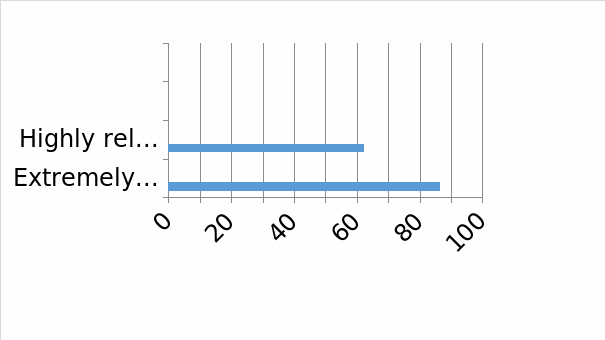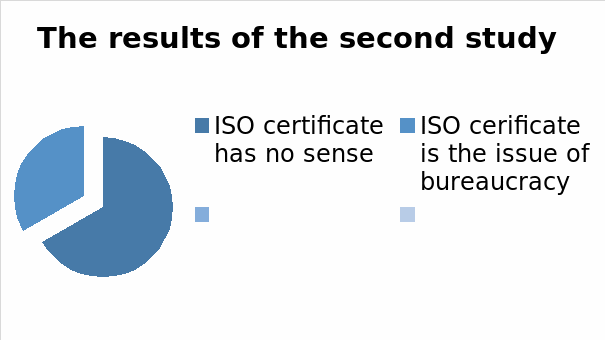The Principles of Quality Management
In order to develop the culture of quality in Aberfact, every employee, including SEO and interns, needs to comprehend the core principles of quality management. The first one of those concerns the customer focus, assuming that an organization needs to communicate with consumers to define their needs based on which its products and services would enhance customer satisfaction and loyalty (Luburic 2015). Another factor constitutes the engagement of people in the working process. There are four hundred employees in Aberfact and each of them at all levels should develop commitment to the company’s success. While some people are performing their tasks assigned by supervisors, others are concerned with management problems. The latter need to possess strong leadership skills in order to encourage and motivate workers. Luburic (2015) suggests that besides social and emotional intelligence, leaders need to possess contextual intelligence. It means that managers need to be flexible in order to align their leadership styles with strategic goals of the company and stakeholders’ expectations.
The fourth principle of quality management is the process approach which implies systematic process management. This includes not only coordination of tasks at the particular moment but their correspondence to organization’s policies and strategic directions. To efficiently achieve strategic objectives, three factors should be primarily considered: organizational structure, its culture, and strategic management (Zgodavova, Petrik & Solc 2013). Furthermore, it should be done regularly in order to correlate with the principle of continuous improvement. Ongoing analysis and assessment also assumes training people on methods and tools for improvement and enhancing the quality of products constantly, otherwise, the company will lag behind its competitors (Luburic 2015). Another quality management principle is related to the evidence-based decision making. It assumes that previous experiences of the company and industry should be analysed prior to elaborating on strategic initiatives. The last factor concerns the relationship management, implying that the company needs to develop stable relationships with stakeholders and take their interests into consideration to achieve sustained success.
Improving Quality Management in Aberfact
As Aberfact operates within a challenging economic environment, the implementation of quality management principles is likely to improve its competence in both domestic and international markets. It should be noted that the total quality management model is not just a set of rules: it is an organizational philosophy which generates long-term benefits rather than a short-term progress. It is also advantageous both for the top management of the company and its stakeholders, including customers, employees, shareholders, suppliers, and community. Quality management conceals great potential to improve productivity, enhance performance, and increase Aberfact revenues by adjusting the company’s policies, strategies, leadership tactics, motivation, and measurement.
A detailed explanation of the quality management principles and their application within Aberfact is likely to drive innovation in the company and improve its credibility in the market. The first stage concerns elaboration on policies and strategic initiatives in organization as there are no frameworks, quality standards, or process improvement tools currently being applied. Explicit guidelines should be developed to mark the quality expectations and explain how to ensure continuous progress. These principles should be also included in strategic plans and initiatives of Aberfact. During the meeting of its shareholders and top management representatives, the company’s direction should be clearly set. There could be an emphasis either on the process or product innovation, but the total quality management assumes that these concepts are inseparable (Nouri 2015). Nevertheless, product improvement is associated with the cost increase which directly influences the customer buying decisions. At the same time, consumers will be confident about the properly assembled and delivered parts for the wind turbines. A deliberate strategy also defines the sustainability course of the company and explains how it can regain a positive reputation among suppliers and customers.
As for the process innovation, it is tightly connected with the internal management system, leadership styles, motivation and engagement of employees, and elaboration on measurement tools. Aberfact has a traditional hierarchical organizational structure, that is why it is necessary to ensure better coordination between departments. Meanwhile, managers need to create a positive atmosphere of trust and motivation to assure successful adaptation of the TQM system (Tasevska 2016). To take advantage of the human potential in Aberfact, it is crucial to change the mindset of employees, define their obligations, rights, and responsibilities. Properly educated and trained professionals have the capability to create competitive advantage for organizations (Dobre 2013). At the same time, managers need to be flexible and clearly define the expectations and needs of their subordinates to create efficient motivational strategies. Overall, to evaluate productivity rates and define whether they correlate with strategic goals, measurement tools are necessary. A performance measurement system is used to quantify efficiency with the help of certain metrics. Such methods as performance pyramid, balanced scorecard, or the added value are also applicable in Aberfact.
ISO 9001 Standard Appraisal
During the industrial revolution, production lines were rapidly developing and modernising in many organizations. However, the quality of items was not perfect as many of them had defects. The first manifestations of quality standardisation were evident in Japan and later in other developed countries. ISO 9001 is based on ISO 9000 but comprises more comprehensive guidelines focused on the process approach with the Plan-Do-Check-Act cycle. It also introduces standards to streamline vocabulary and terminology, explains the risk-based approach, and provides recommendations on the leadership strategies. Application and maintenance of ISO 9001 means allocating resources in accordance with the costs involved (Prado-Roman et al. 2018). Furthermore, it brings rewards as a result of its implementation at the enterprise, which relates to both internal and external aspects.
The results of the first study


The ISO 9001 standard is suitable for Aberfact because it brings a number of potential benefits. The companies in civil construction and other similar industries associated with manufacturing have reported success after aligning their processes with ISO 9001 (Prado-Roman et al. 2018). The relevance of this standard is sometimes questioned, but several recent studies provide the results on the issue. Thus, eighty-six per cent of firms reported that quality management was highly relevant, while sixty-two per cent of corporations confirmed that it was extremely relevant, especially regarding commercial and customer management improvements (Prado-Roman et al. 2018). Other study revealed that twenty per cent of respondents described their intention for the ISO certificate to be hanging on the wall, while ten per cent of surveyed organizations affirmed that it was just an issue of unnecessary costs and bureaucracy (Tasevska 2016). However, these companies were beyond the construction or manufacturing industry. Therefore, the relevance of quality management and ISO 9001 is obvious for Aberfact which operates in the steel industry.
Adopting a Performance Excellence-Based Approach
Many principles of TQM are embedded in the criteria defining performance excellence. EFQM is one of the excellence models which was developed by the European Foundation of Quality Management. It facilitates the understanding of cause and effect relationship based on the actions of organizations and their subsequent outcomes. This model incorporates nine criteria which characterise a causal relationship: leadership, strategy, people, partnerships and resources, processes, customer results, people results, business results, and society results. Thus, the implementation of EFQM allows adding value for customers, driving innovation, developing the firm’s vision, utilising human potential, and developing sustainability approaches (Jankal & Jankalova 2017). The benefits of adopting a performance excellence-based approach for Aberfact constitute creativity and innovation, enhanced work conditions, team work, motivation level, and general organizational culture (Zdrilic & Dulcic 2016). This can be achieved with dedication of top management and leaders. Overall, performance improvements are possible when all the employees are engaged in the process alternation for the sake of its further enhancement.
Process Improvement Tools and Techniques
The process improvement can be either radical or continuous in the company. A breakthrough or innovation-based approach is radical because it enables the creation of products that form entirely new markets or significantly change the existing ones (Kamuriwo, Baden-Fuller & Zhang 2017). In this case, Aberfact needs to invest in research and development in order to elaborate on a new design of wind turbine parts. The company also needs a comprehensive risk management plan in order to assess all possible challenges. However, continuous improvement or ‘kaizen’ is highly recommended for Aberfact at present. This process improvement technique conceals potential benefits for the firm because gradual steps are more effective within the organizational environment than the large-scale ones (Akter, Yasmin & Ferdous 2015). This approach allows implementing manufacturing control so that errors and missing components could be identified in the process. As many stakeholders are not satisfied with the quality of goods produced in Aberfact, those who directly accomplish work would be responsible for controlling the processes and identifying defects.
Concluding Remarks
Considering the current operational environment in Aberfact, the process of quality management principles implementation in the company should be gradual. Such changes will be beneficial because other similar organizations have reported their success owing to ISO 9001 standard adoption. A performance excellence-based approach is likely to improve the company’s activity because it allows aligning its operations with current trends, developing actual strategies, utilising human potential, identifying customer needs, and developing sustainability approaches. Meanwhile, continuous process improvement could enhance control over the production and assembly lines in order to identify defects in details and provide quality wind turbine parts to the customers. In case Aberfact sticks to these recommendations, it will be competent in the market and regain good reputation among its stakeholders.
Reference List
Akter, S, Yasmin, FR & Ferdous, A 2015, ‘Implementation of kaizen for continuous improvement of productivity in garment industry in Bangladesh’, American Academic & Scholarly Research Journal, vol. 7, no. 3, pp. 229-243.
Dobre, O 2013, ‘Employee motivation and organizational performance’, Review of Applied Socio-Economic Research, vol. 5, no. 1, pp. 53-60.
Jankal, R & Jankalova, M 2017, ‘The importance of process approach in selected business excellence models’, International Journal of Applied Business and Economic Research, vol. 15, no. 15, pp. 147-158.
Kamuriwo, DS, Baden-Fuller, C & Zhang, J 2017, ‘Knowledge development approaches and breakthrough innovations in technology‐based new firms’, The Journal of Product Innovation Management, vol. 34, no. 4, pp. 492-508.
Luburic, R 2015, ‘Quality management principles and benefits of their implementation in central banks’, Journal of Central Banking Theory and Practice, vol. 3, no. 1, pp. 91-121.
Nouri, M 2015, ‘A comprehensive Total Quality Management strategy and organization’, International Journal of Engineering Research and Development, vol. 7, no. 1, pp. 94-99.
Prado-Roman, C, Castillo-Peces, C, Mercado-Idoeta, C & Castillo-Peces, J 2018, ‘The effects of implementing ISO 9001 in the Spanish construction industry’, Cuadernos de Gestion, vol. 18, no. 1, pp. 149-172.
Tasevska, J 2016, ‘Quality management (TQM – Total Quality Management) in order to improve the operations quality of HR’, Universal Journal of Management, vol. 4, no. 6, 332-336.
Zdrilic, I & Dulcic, Z 2016, ‘Business excellence as a success factor for the performance of large Croatian enterprises’, Management, vol. 21, no. 1, pp. 145-162.
Zgodavova, K, Petrik J, & Solc, M 2013, Principles, concepts, and standards of quality management: quality, metrology, information security, Lap Lambert, Saarbrucken.
